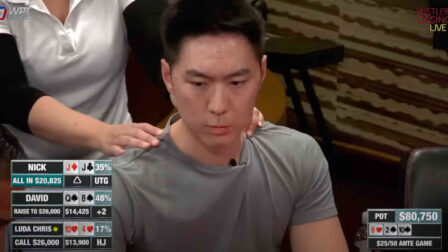Dealing With 3-Bets in Poker Tournaments – Expert Tips by Fedor Holz

3 minutes
Last Updated: November 5, 2023
If you want to become a top player in your games, make sure to learn from the best and check pokercode.com
…
In this article, I’ll talk about some general concepts you should understand and keep in mind every time you face a 3-bet in a tournament.
Overall, there are three major factors to consider in these scenarios, namely:
- Your hand equity vs. opponent’s perceived 3-betting range
- The 3-bet size and resulting pot odds
- How likely are you to realize your hand equity?
Understanding and correctly applying these three factors every time you find yourself facing a 3-bet is extremely important for your long-term results.
Hand Equities in a 3-bet Pot
The first thing to look at is how our hand equity looks like against the opponent’s likely range of hands. The first order of business is figuring out how strong the opponent’s 3-betting range is likely to be and then deciding how our specific hand performs against that range.
To make this conclusion, you should look at three things:
- The opponent’s position (as this will heavily influence their 3-betting range)
- Your position (will you be in or out of position after the flop)
- Any exploitative tendencies you might be aware of about a particular opponent
To better explain this, let’s look at two examples featuring the exact same hand, Q♣10♣, but in slightly different scenarios.
In the first example, you open from an early position and get a 3-bet by an opponent in the middle position who you know is fairly tight and passive.
Based on their position and this knowledge, we can assign them a very narrow range, and against that narrow range, our hand has an equity of just 28%. So, the best course of action is to fold and move on to the next hand.

In the second scenario, we open from the cutoff and face a button 3-bet from the player we know to be on the aggressive side. Thus, their perceived range is much wider, which means that our hand will perform much better, and we can easily continue.

As you can see, there can be quite a big equity difference depending on the 3-bettor’s position and their overall tendencies. You need to be aware of these factors and adjust accordingly, making sure you’re continuing in the right spots and giving up in less favorable scenarios.
Understanding the Underlying Math
Finding the right play in a 3-bet scenario boils down to math. What pot odds are we getting, and what is the equity we need to continue in a hand?
The most important thing to look at is sizing. Against smaller sizes, we’ll always be getting much better odds, which means we can call with a wider range of hands as we don’t need as much equity.
In the same vein, facing a larger 3-bet, we simply have to give up many hands.
Once we have a good idea of what equity we need and if we’re getting the right odds against the perceived range, the final step is to figure out how well we’ll be able to realize that equity.
For a hand to realize its equity, it needs to reach the showdown, and different types of hands play out very differently in particular situations. For example, suited connectors play much better in deep-stacked situations, while high-card hands are much easier to play in shorter scenarios.
Finally, always consider your position, as no matter what, most hands will be much easier to play after the flop if you have a position on your opponent!





















